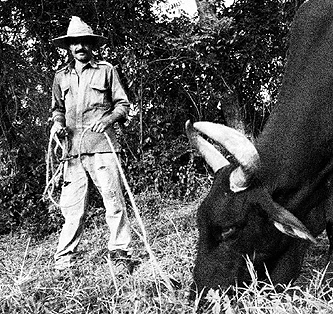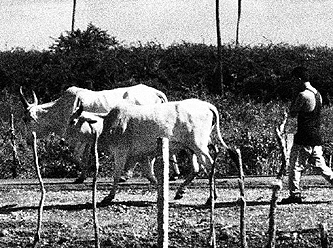Stabilak, for the natural preservation of milk
Results
STABILAK has made it possible to treat more than 600 million litres of raw milk in Cuba, representing a third of the total annual production, with excellent results and with no reported harm to human health. Annually between 60 and 80 million litres of milk are protected with STABILAK, which means avoiding the loss of approximately the equivalent of 8.000 metric tonnes of milk powder which would have to be imported if the milk soured due to lack of refrigeration.
[quote]STABILAK is used for different types of milk: cow, goat, sheep and buffalo[/quote]
The product costs less than 2% of the average price (to the producer) of a litre of milk, and its comparative cost is generally less than the cost of refrigeration.
[quote]The results obtained in Cuba coincide with those obtained in other countries in the Americas. The most important result is that with the continuous use of the activation of the Lactoperoxidase System (in Cuba since 1992 and in other Latin American countries), there have been no cases reported of harm to consumer health, nor harm to the milk’s organoleptic characteristics.[/quote]
The product has been used successfully in all 14 provinces of the country. There is experience in its use along the entire agro-industrial chain: small producers, dairy cooperatives, large enterprises, dairy industries. STABILAK is used in a variety of conditions: systems of collection in cans, cistern vehicles, intermediate collection centres and direct distribution of raw milk.
In terms of the product’s impact, here are some other quite interesting results:
•No change has been noted in the production of dairy products, and in general it improves the quality of the products.
•It increases the amount of cheese produced, on the order of 0.5Kg per 100L of milk.
•It produces excellent results in milk cooled for long periods (48-72 hours on weekends).
•It improves the pasteurisation process of the milk that has been previously activated.
•It allows for the elimination of the use of products banned by international regulations and that harm human health due to their residue, toxicity and alterations of the milk components, which cause a decrease in the output of dairy products and always affect the intrinsic quality of the milk. The method is a natural enzyme system approved by the Codex Alimentarius and harmless to human health.
•It decreases losses of milk due to souring and conserves the initial quality of the milk.
•It does not interfere with the tests for adulteration by dilution with a lactodensimetre, nor the crioscope. It does not interfere with tests to determine if antibiotics or any other substances foreign to milk are present.
•It makes possible the development of dairies in areas without electrical power.
•It improves the quality of dairy products, with emphasis on small-scale cheese production. It does not interfere with the production of fermented products.
•It facilitates the collection and transport of milk over long distances.
•It allows for the conservation and distribution of milk to the population in disaster situations.
•It reduces the risks of illness caused by contaminating micro organisms in the milk.
•It can be used for cow, goat, sheep, buffalo and camel milk.
•It is easy to use, and with the established control mechanisms, may be used by people with no specialised technical preparation.
Under the average conditions of developing countries, the added cost to one unit of reference, in this case one litre of milk, is about five tenths of a cent (in US$), or 0.5 cents/litre. This means that 50 litres of milk may be kept for an approximate cost of 25 cents, which at the selling price of these countries, means that for the sale price of one litre, 49 litres may be kept fresh. This is less than, or at least similar to, the cost of electrical power used for refrigeration.
For a herd that produces between 50 and 85 litres of milk, the value of one day’s loss of production due to souring could cover the cost of using the activating product for one month’s worth of production, with losses avoided.
Keeping in mind that the use of the activator makes possible double milking in areas where milk is not collected in the afternoon, the increase in production in one day could cover the costs of keeping one month’s worth of that second milking fresh.
The possibility of extending the shelf life of products on the market, be it raw or pasteurised milk, fresh cheeses, creams and so on, would in itself justify the use of the LPS at the commercial level.
[quote]
Nevertheless, the most important advantage of STABILAK is the possibility it offers to continue or expand milk production in areas where it is currently almost impossible to do so; to improve the quality of the raw material and product derivatives; and to avoid any other method that is prohibited or harmful to human health.[/quote]
The validity of the innovation has been demonstrated within the country and also internationally: there is currently a worldwide FAO programme for encouraging the use of the Lactoperoxidase System.
The many advantages associated with use of the product, as mentioned above, contribute significantly to a favourable cost/benefit balance.








 COUNTRY OF ORIGIN
COUNTRY OF ORIGIN OUTSTANDING IDEASS PROJECTS
OUTSTANDING IDEASS PROJECTS